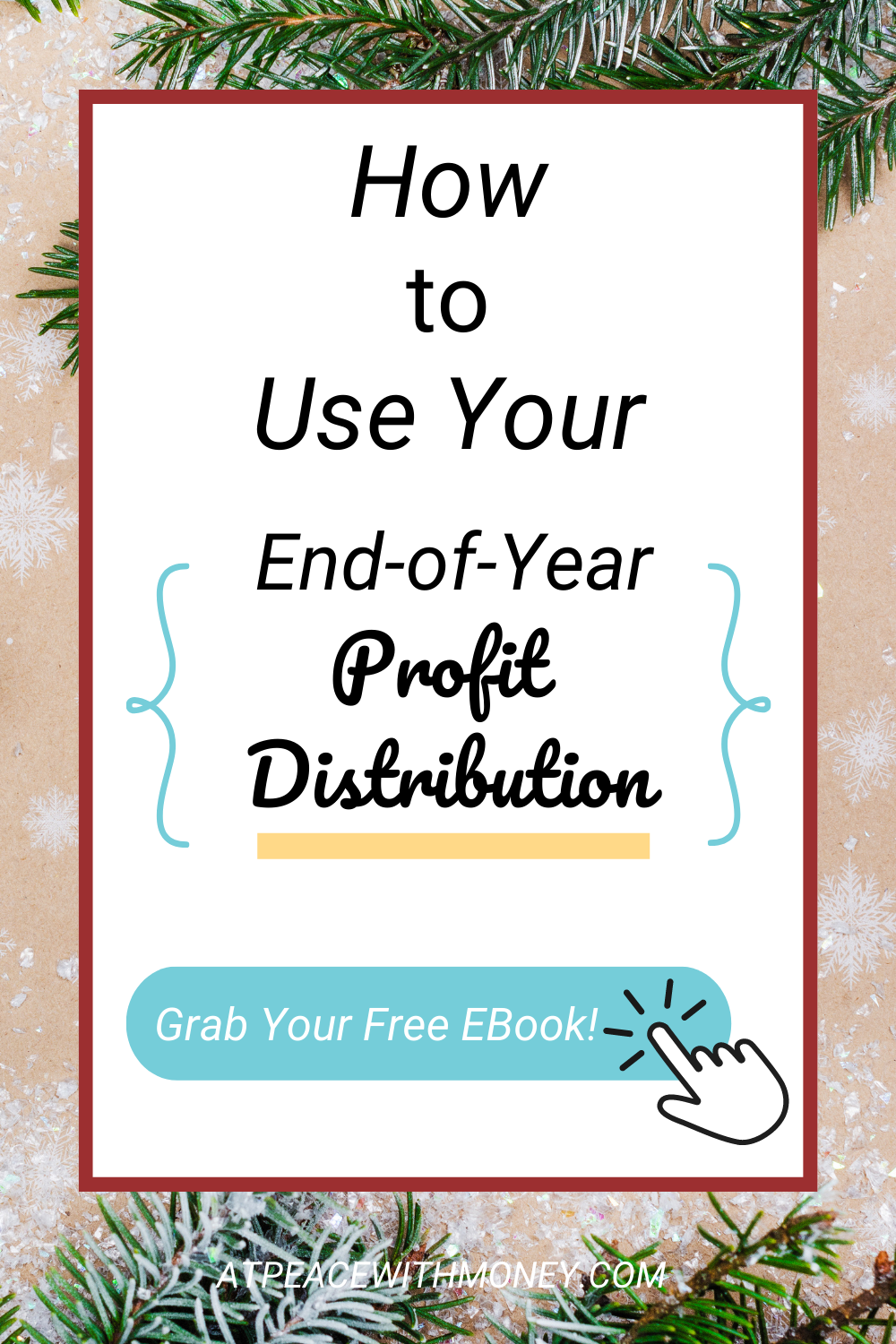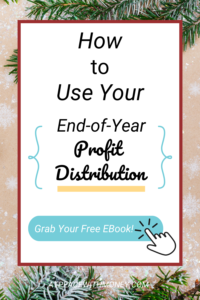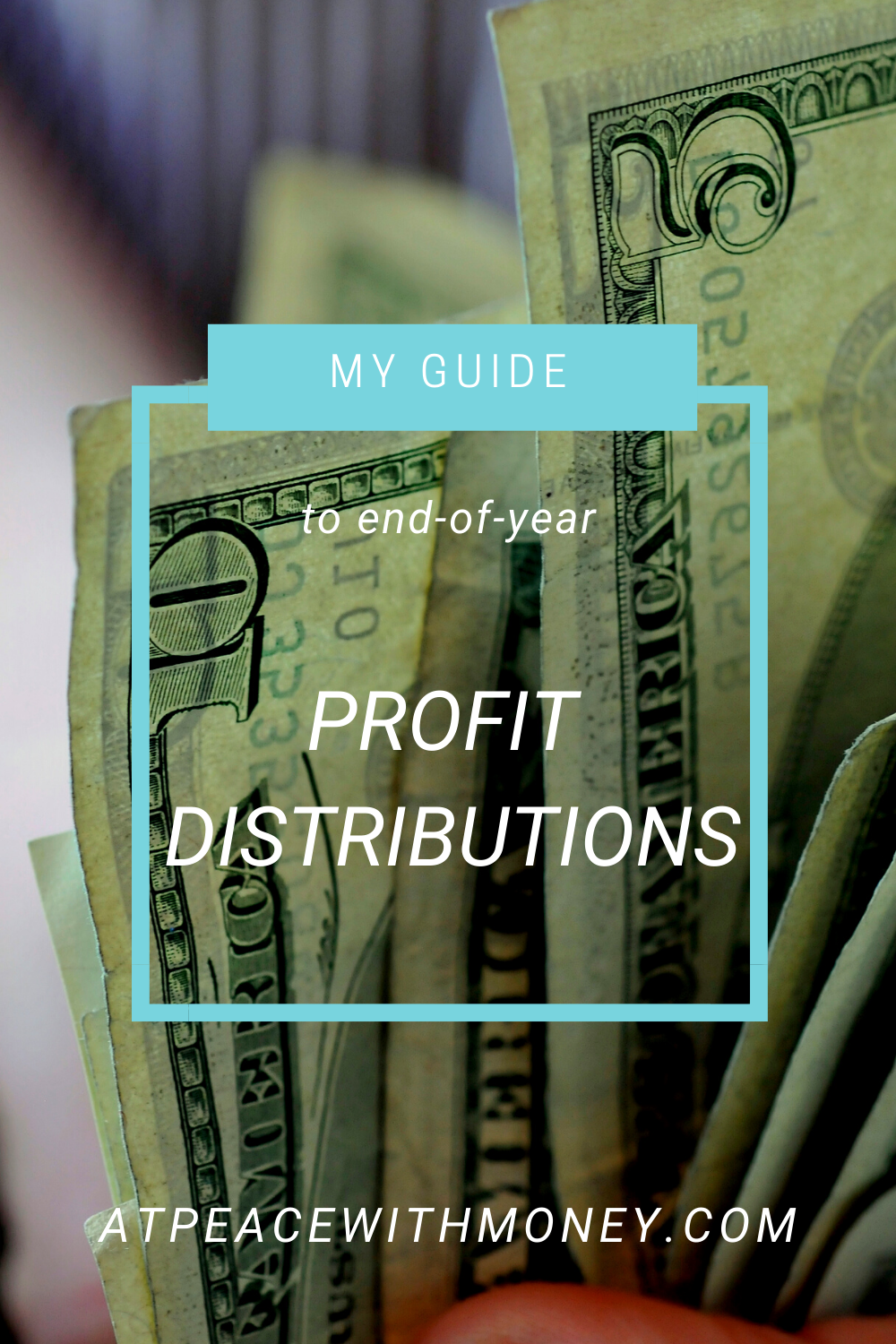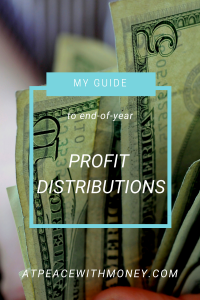How to Create a Generous Business: Leverage Your Profits

I’m a big proponent of using a money system in your business for many reasons. One of those is the way it can make giving away money, or donating, so much easier. Today, we’re focusing on how to use your profits to be able to give freely in your business. In my series on money mapping, I wrote about setting up a profit account like the Profit First system suggests. I’ve also written about how you might use that profit account to donate money. This post will be a more in-depth exploration of those concepts, so go ahead and read those posts if you haven’t already!
The Purpose of Profit
In my post “The In-Depth Guide to Mapping Your Money, and How it Can Fortify Your Business, Part II,” I describe the profit account in a money system this way:
The profit account accumulates and then is distributed quarterly. Business owners are encouraged to use their Profit Distributions to reward themselves for their hard work. This keeps the owner excited about and invested in the business. It also discourages any tendency to reinvest everything back into the business, or over-save. Rewards can range from a day out to charitable giving, to really anything you want!
Note that last bit: charitable giving. Recently, I’ve made a couple posts about how to figure out what we really want to spend our money on. It has to do with our values – when we know what’s really valuable to us and we think about how to get that, we can spend our money in ways that are the most purposeful and fulfilling to us. We can spend in a way that brings us that feeling of “enough.”
Lynne Twist, author of The Soul of Money, describes this phenomenon this way: “When people were able to align their money with their deepest, most soulful interests and commitments, their relationship with money became a place where profound and lasting transformation could occur.” Imagine doing this every quarter with your quarterly profit distribution! To create a generous business and get the most satisfaction from your profits, I encourage you to engage in some soul searching. Think about what the word “generous” means to you and what you might do with your money to embody this word.
A Generous Business is a Happy Business
One suggestion I’d like to make here, is sharing your profit distribution in the form of holiday bonuses for any employees or independent contractors you work with. Appreciate the work they do by sharing your profits. Receiving their thanks and building up a relationship of mutual appreciation can be one of the most satisfying ways to use your profit distribution. It can also improve the overall quality of your work life! Because I advise clients to use the money accumulated in their profit account every quarter, the last distribution of the year comes up during the holidays. This is the perfect time to show employees some appreciation.
Be For Your Community
 This year has given us more opportunities than ever to show up for our community as small business owners. I encourage you to think about organizations in your local community or on a larger level that you would like to show visible support for with your business. I wrote a post about thinking about your business’s role in your community called “How to Step Up for Your Community as a Business Owner,” that you might like to read to get some more thoughts on this subject.
This year has given us more opportunities than ever to show up for our community as small business owners. I encourage you to think about organizations in your local community or on a larger level that you would like to show visible support for with your business. I wrote a post about thinking about your business’s role in your community called “How to Step Up for Your Community as a Business Owner,” that you might like to read to get some more thoughts on this subject.
One way your business can give (that’s coming up soon!) is by participating in #GivingTuesday on Tuesday December 1st. Here’s their guide for small businesses who want to participate. For GivingTuesday, At Peace With Money is supporting Violence in Boston and Second Harvest Food Bank, just to give you some ideas!
I hope this post inspires you to be generous this season! If you would like to work with someone to develop a money system which enables you to feel abundant and be generous, schedule a curiosity call with me. I’m happy to chat and see if we can work together.
Angela
Image: Kelly Sikkema







 The goals that I’m currently leveraging my money system to save up for range from small things to big life events. Last November, I bought a 2016 Rav-4, so one of the goals I’m working on is paying off my car loan. I am also saving up to do a motorcycle tour of New Zealand! Originally I had a target date for this goal, but now things depend on when COVID-19 is no longer an issue, so things are a bit more flexible. You can
The goals that I’m currently leveraging my money system to save up for range from small things to big life events. Last November, I bought a 2016 Rav-4, so one of the goals I’m working on is paying off my car loan. I am also saving up to do a motorcycle tour of New Zealand! Originally I had a target date for this goal, but now things depend on when COVID-19 is no longer an issue, so things are a bit more flexible. You can 


 Go back to step one, and take stock again of all you’ve done this year, including this review process. Chances are, you will find you’ve done quite a bit of work towards your goals, no matter how close you might be to completing them! Take some time to celebrate all the work you’ve done. Treat yourself to an afternoon off, a fun or inspiring event, or whatever you’d like to do to celebrate your achievements so far! Being a solopreneur is hard work. If you’ve done the work, you deserve to cheer yourself on once in a while.
Go back to step one, and take stock again of all you’ve done this year, including this review process. Chances are, you will find you’ve done quite a bit of work towards your goals, no matter how close you might be to completing them! Take some time to celebrate all the work you’ve done. Treat yourself to an afternoon off, a fun or inspiring event, or whatever you’d like to do to celebrate your achievements so far! Being a solopreneur is hard work. If you’ve done the work, you deserve to cheer yourself on once in a while.


 with me if you want to know more about how the process might apply to you.
with me if you want to know more about how the process might apply to you.

 Perhaps you can donate your time or services to a cause, or offer them for free for Black or low-income people in your area. You might create a fundraising offering, where a certain percentage of proceeds goes to fund an organization in your community. If you get creative, there are many ways to chip in and stay in your business’s budget. Next week, I’ll be talking about how to use money mapping to figure out how much you can give to causes. Stay tuned for that.
Perhaps you can donate your time or services to a cause, or offer them for free for Black or low-income people in your area. You might create a fundraising offering, where a certain percentage of proceeds goes to fund an organization in your community. If you get creative, there are many ways to chip in and stay in your business’s budget. Next week, I’ll be talking about how to use money mapping to figure out how much you can give to causes. Stay tuned for that. 






 can still do a lot with your profit distribution. A couple ideas include:
can still do a lot with your profit distribution. A couple ideas include:


 In this case, you would plan backwards from December. I highly recommend that you also plan to take some time off for the winter holidays, so factor that into your plan! If you don’t want to be working up until the 31st, start your timeline at Friday December 17th, or a similarly spacious date.
In this case, you would plan backwards from December. I highly recommend that you also plan to take some time off for the winter holidays, so factor that into your plan! If you don’t want to be working up until the 31st, start your timeline at Friday December 17th, or a similarly spacious date.






 Now that I’ve made a case for separating your business and personal finances, let’s go over two different ways you can do this. In the beginning of this article, I mentioned that some solopreneurs think its sensible to avoid opening another account. It’s true that this can help you bypass banking fees associated with business accounts.
Now that I’ve made a case for separating your business and personal finances, let’s go over two different ways you can do this. In the beginning of this article, I mentioned that some solopreneurs think its sensible to avoid opening another account. It’s true that this can help you bypass banking fees associated with business accounts.